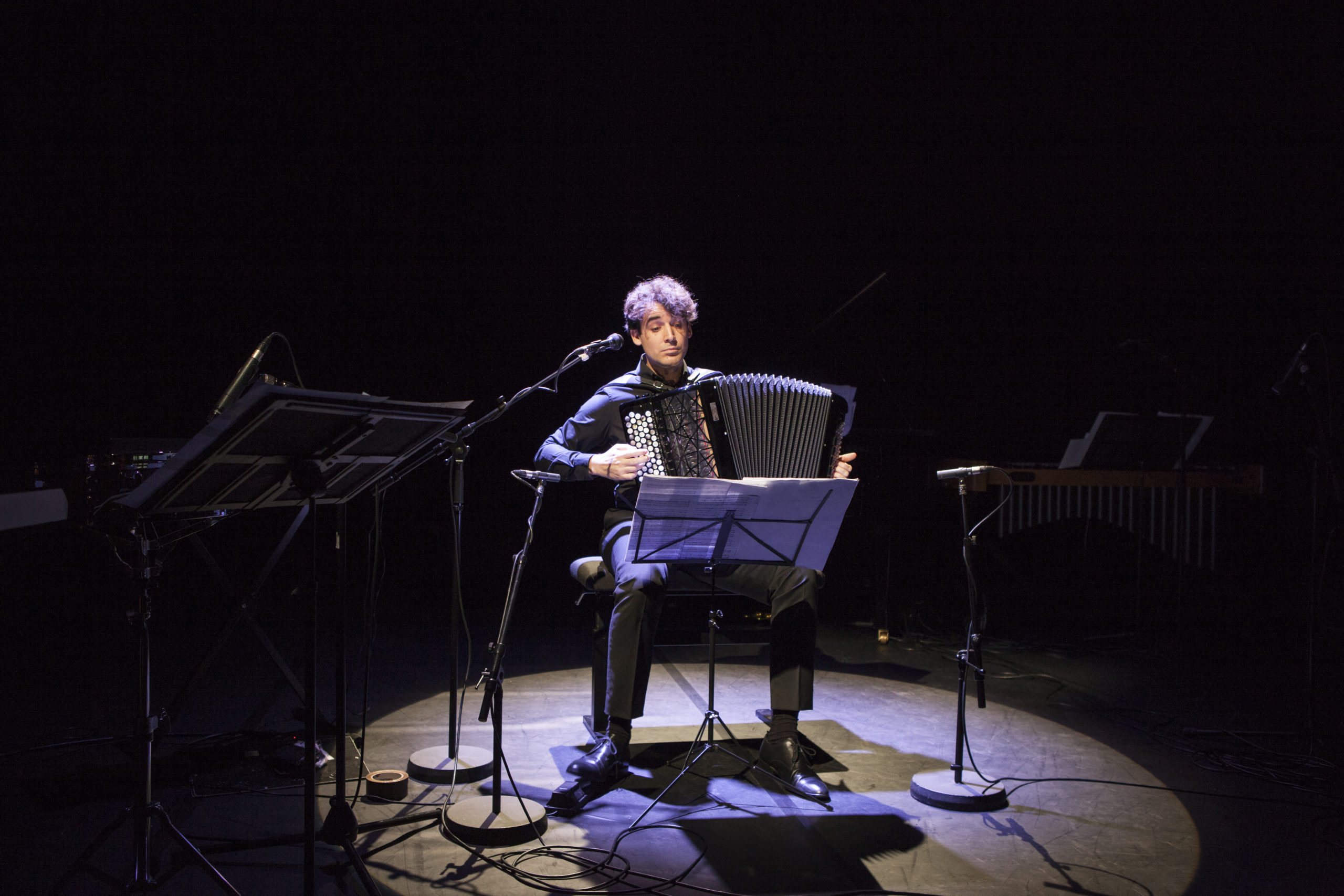Double
Radiophonic fantasy for accordion, live and recorded voices. For Vincent Lhermet.
Composition
2018
Catalogue number : 79
The piece is constructed as a short radiophonic reportage describing a small toy-accor- dion from the German Democratic Republic. It is intended as a live radioplay that can be played in front of an audience and broadcasted in real time with no need of further editing.
It is structured around 52 numbered short sound files to be triggered in a given order by the interpreter through a midi pedal.
The interpreter is to use his or her own speaking voice, closely amplified by a micro- phone ( a good headset microphone is recommended, as well as a stereo aplification for the accordeon with left and right hands/keyboards moderately panned to the two sides). The amplification should suffice to place the volume level of live voice slightly above the volume level of the instrument without too much effort.
The volume of the recorded fragments should also be matched to the live voice and accordion similarly to the balance attained in a radiophonic mix.
The speaking voice should be casual but slightly pitched in order to “lay” on the pitch- es of speech heard in the recorded voice.
All the live voice passages are exact copies of corresponding recorded voice fragments and effort should be put in imitating the corresponding fragments as closely as possbi- ble. Speech hesitations and breath are also to be taken into consideration.
In some cases the live voice has to be synched only with the accordion, and care should be put into finding the right natural tempo that corresponds to the similar recorded fragment.
In other cases the live voice has to be synched with both accordion and recorded voice alike. In these cases it is specified wether the interpreted has to either: 1) match as tight as possible the recorded voice 2) be slightly out of synch in order to produce a very short delay/phasing effect.
All the 52 audio files and max/msp player-patch are indispensable to the piece and can be obtained directly from the composer.
The small blue accordion portraid in the piece belongs to Fatima Bianchi.
The piece has been written for Vincent Lhermet, featuring his own voice but it is equally possible for another interpreter to play it without re-recording the voice frag- ments.
Commissioned by the Festival d’Automne à Paris
